OUR FAVORITE MEMORIES

Click the ( + ) signs to explore the items in our scrapbook.
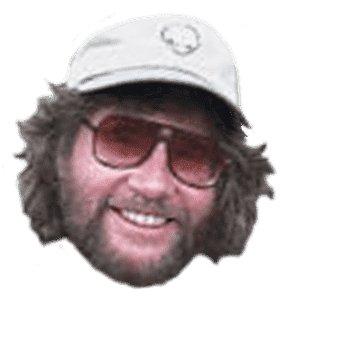
We all have different favorite memories of our trips to the Gobi during the 1990s.
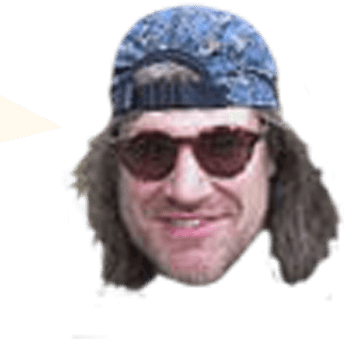
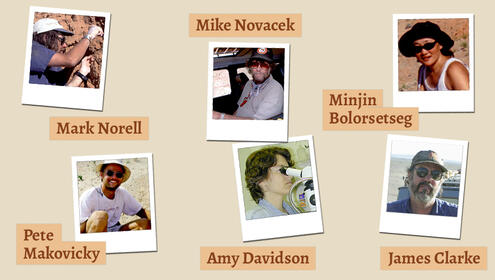
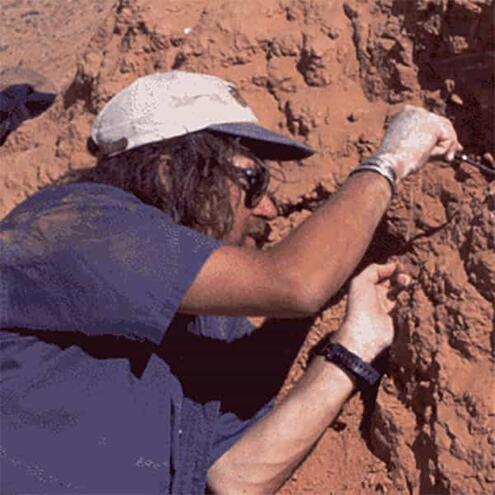
Mark Norell
My favorite memory of Mongolia is from something that seemed bad at the time. It was the end of the season in 1998. We had been through a lot—difficult desert crossings, intense heat, broken cars, a whole lot of sand. We were creeping home, some vehicles in tow, others sputtering far behind. It was drizzling when we stopped the cars around 7 p.m. We picked a place in a low area, and some of us broke out the dinner essentials while our friends collected the requisite camel dung and small sticks to provide cooking fuel for our meal.
The rain picked up, and soon our Mongolian stoves were surrounded by an inch of water. Time for Plan B. Before our water for the couscous got hot, we had moved our blast-furnace stove to higher ground. The water was rising, and soon what had been dry ground was a pool of water with rapids 25 feet across, splitting our camp in half. Suddenly, dinner became unimportant. We now had fossil-filled vehicles stuck on small islands in the middle of this storm.
After a few hectic moments, during which we were soaked to the bone, everything was safe; the trucks had navigated the deep water or had been towed out. Our dinner was ruined. At 9, the sky cleared. As tired as we were after working hard in the desert all summer, those bright orange shafts of sunlight warmed us just by their color.
To the strains of Guns n' Roses, we all toasted this life we are fortunate enough to live, in a place we would be hard pressed to find again. In the morning the river was gone, and we were on our way, pushing back toward Ulaanbaatar and then home.
When I think of my years in the Gobi, it is such memories that I hold most dear.
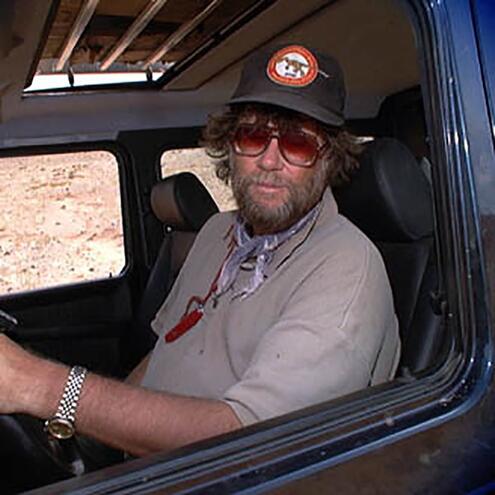
Mike Novacek
My favorite memory of Mongolia is the first day we found Ukhaa Tolgod in 1993. We found nearly 100 dinosaurs, mammals, and lizards that day. It didn't look like much from a distance, only a few red brown hills. But we practically tripped over skeletons of Protoceratops, lizards, and mammals as we got out of the car. Within an hour, we knew we had found the "field of dreams" of our collective lifetimes.
It's hard to describe the feeling of elation and the shock of disbelief that such a discovery brings.
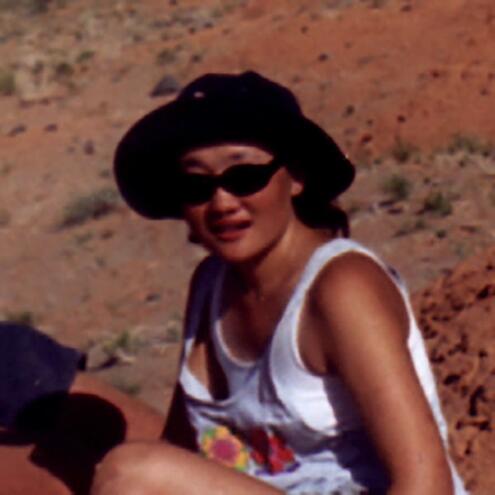
Minjin Bolorsetseg
My favorite memory of Mongolia is the first time I saw a lizard in real life. Even though I have been going on expeditions to the Gobi Desert for eight years, I grew up in Ulaanbaatar, which is the capital city of Mongolia. Like in most cities, there is little wildlife in Ulaanbaatar. When I first saw a lizard in the Gobi, it ran very quickly and headed right for my leg. I was very startled, much the same way other people are afraid of mice or roaches. Gradually, I got used to lizards, and now I consider them my friends.
My experience with lizards did not end there. Lizards have been around for 160 million years, and some of the most important fossils of lizards have been found in the Gobi. I have found many fossil lizard skulls and skeletons in Mongolia, and they are some of my favorite fossils to find. Unlike a large dinosaur, which can be seen from some distance away, a lizard skull is really small, and it takes a lot of concentration and persistence to find one.
I look forward to this coming summer, when I will have another opportunity to see my lizard friends and their fossil relatives.
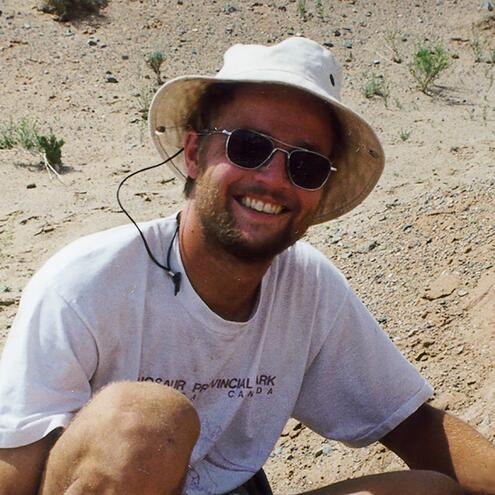
Pete Makovicky
My favorite memory of Mongolia is the first time I saw Ukhaa Tolgod in 1998. I had seen many of the fossil treasures from this locality and had worked on some of them, so I was eager to experience fossil hunting at Ukhaa myself. Before going to Ukhaa, we had driven far to the west in the Gobi, to an area known as Dhosh. From there we had driven straight across a difficult expanse of desert full of sand, in which our vehicles, especially the heavy trucks, got stuck. After three days of driving, towing, and digging our way through the sand, we finally made it to the Nemegt Valley, where Ukhaa is. As we approached Ukhaa on the afternoon of the fourth day, the weather was perfect: sunny but not too hot. My fellow expedition members were getting excited—this was a homecoming for them.
Finally, we got there, and everyone was in a great mood. We quickly unpacked the trucks and then set off fossil hunting. Although my luck at prospecting was not good that first day, it was great to walk around and marvel at the scenery, and have the "old-timers" point out where specimens were discovered.
It was rewarding to finally be at this magical place, where so many fantastic fossils have been found.
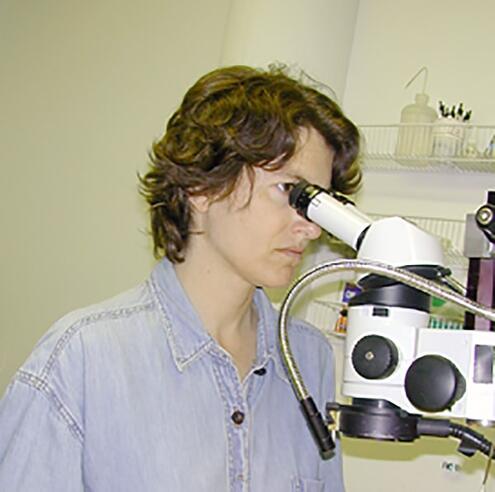
Amy Davidson
My favorite memory of Mongolia is relived each time I prepare a fossil back at the Museum in New York. When I take the plaster jacket off an encased specimen in the lab, I see it for the first time since I left the Gobi. Small pieces of sand rub off the surface, and it feels like I'm back in the field. The curiosity and excitement I felt when I prepared the specimen for travel comes back to me. I'm lucky—I get to excavate finds all year round, not just when I'm in the field.
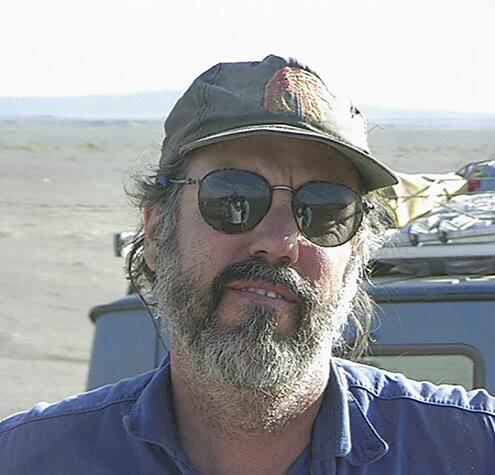
James Clarke
My favorite memory of Mongolia is from 1991, the first year we organized a large expedition. Mongolia, and its giant neighbor to the north, the Soviet Union, was going through huge political and economic changes. Their governments were changing from communism to capitalism, which affected almost every aspect of daily life. These changes threw Mongolia into chaos. The money from the wealthier Soviet Union that helped hold Mongolia together had suddenly disappeared. The Soviet Union itself was about to crumble into many separate states, with separate governments. Every day brought a new challenge—especially when it came to finding food and gasoline, which were in very short supply that year.
After several months of exhilaration and frustration, we slowly made our way out of the Gobi and back to Ulaanbaatar, each of us many pounds lighter than when we began. Our Mongolian colleague Dashzeveg decided that we should see something of Mongolia other than the Gobi, so we took a longer route back through the Orkhon river valley, in the midst of the forest country to the north. There we constructed fishing poles from branches, using dental floss for line, bent sewing needles for hooks, and worms for bait. Even though the fish would flip off the unbarbed sewing needles almost as soon as they struck, somehow we managed to land a couple of good-sized trout.
After a summer of carefully rationed freeze-dried food and tougher-than-leather mutton, they were indescribably delicious.
Image Credits:
Mark Norell and Amy Davidson, courtesy of AMNH; Mike Novacek, courtesy Discovery Channel Online; James Clark, courtesy James Clark; Minjin Bolorsetseg, courtesy Minjin Bolorsetseg; Pete Makovicky, courtesy Pete Makovicky




 Biodiversity
Biodiversity
 Brain
Brain
 Genetics
Genetics
 Marine BiOLogy
Marine BiOLogy
 MicrobiOLogy
MicrobiOLogy
 PaleontOLogy
PaleontOLogy
 ZoOLogy
ZoOLogy
 AnthropOLogy
AnthropOLogy
 ArchaeOLogy
ArchaeOLogy
 Astronomy
Astronomy
 Climate Change
Climate Change
 Earth
Earth
 Physics
Physics
 Water
Water
